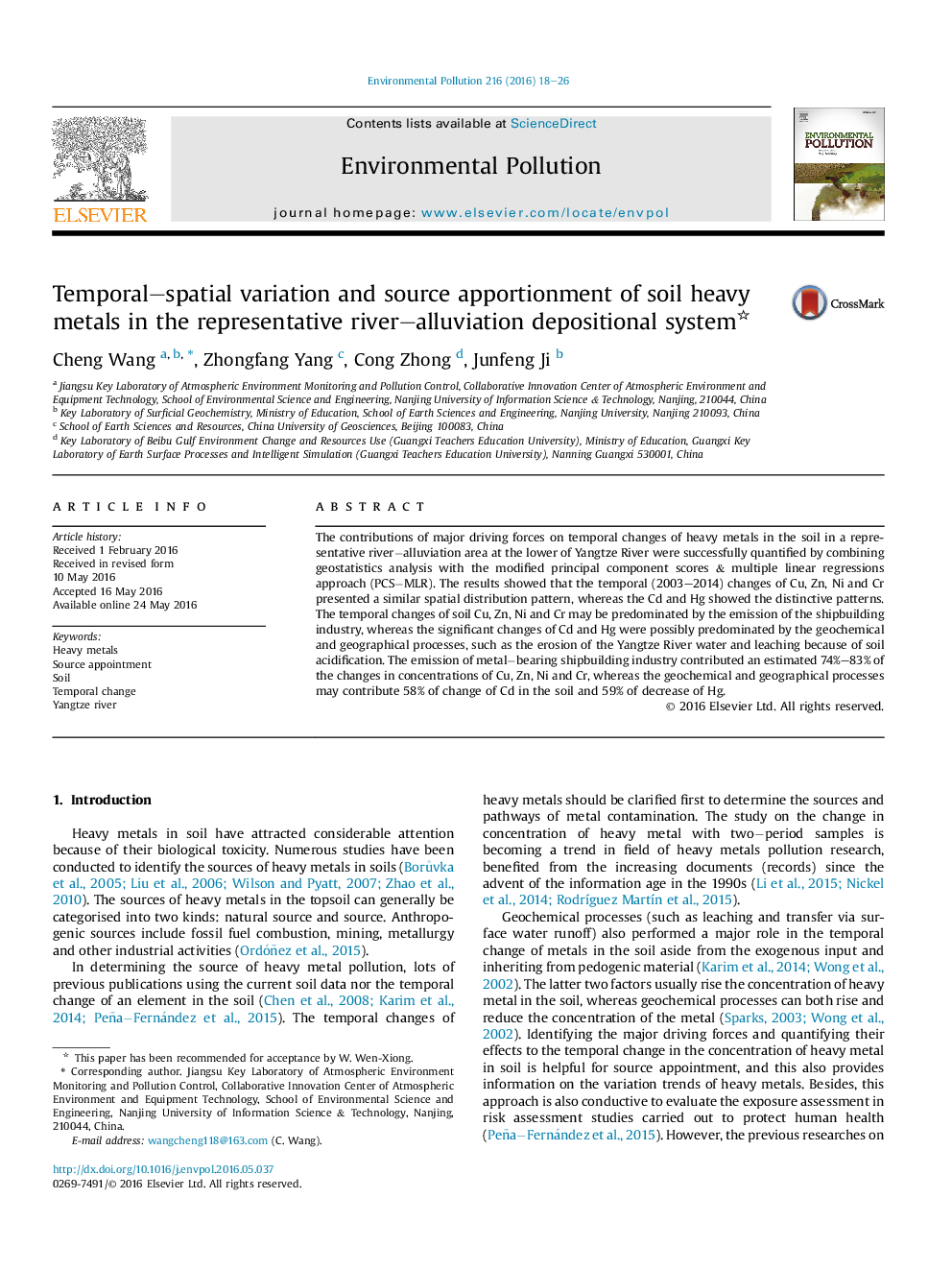| Article ID | Journal | Published Year | Pages | File Type |
|---|---|---|---|---|
| 6315771 | Environmental Pollution | 2016 | 9 Pages |
â¢Effects of driving forces on temporal change of metals were quantified with PCSâMLR.â¢Temporal change of metal was driven by anthropogenic input and geochemical process.â¢Dominant factor on Cd change was more complicated relative to other heavy metals.â¢Cd increase was due to river erosion, whereas decrease due to soil acidification.â¢Decreased concentration of Hg was contributed to the geochemical process.
The contributions of major driving forces on temporal changes of heavy metals in the soil in a representative riverâalluviation area at the lower of Yangtze River were successfully quantified by combining geostatistics analysis with the modified principal component scores & multiple linear regressions approach (PCSâMLR). The results showed that the temporal (2003-2014) changes of Cu, Zn, Ni and Cr presented a similar spatial distribution pattern, whereas the Cd and Hg showed the distinctive patterns. The temporal changes of soil Cu, Zn, Ni and Cr may be predominated by the emission of the shipbuilding industry, whereas the significant changes of Cd and Hg were possibly predominated by the geochemical and geographical processes, such as the erosion of the Yangtze River water and leaching because of soil acidification. The emission of metalâbearing shipbuilding industry contributed an estimated 74%-83% of the changes in concentrations of Cu, Zn, Ni and Cr, whereas the geochemical and geographical processes may contribute 58% of change of Cd in the soil and 59% of decrease of Hg.
Graphical abstractDownload high-res image (626KB)Download full-size image
